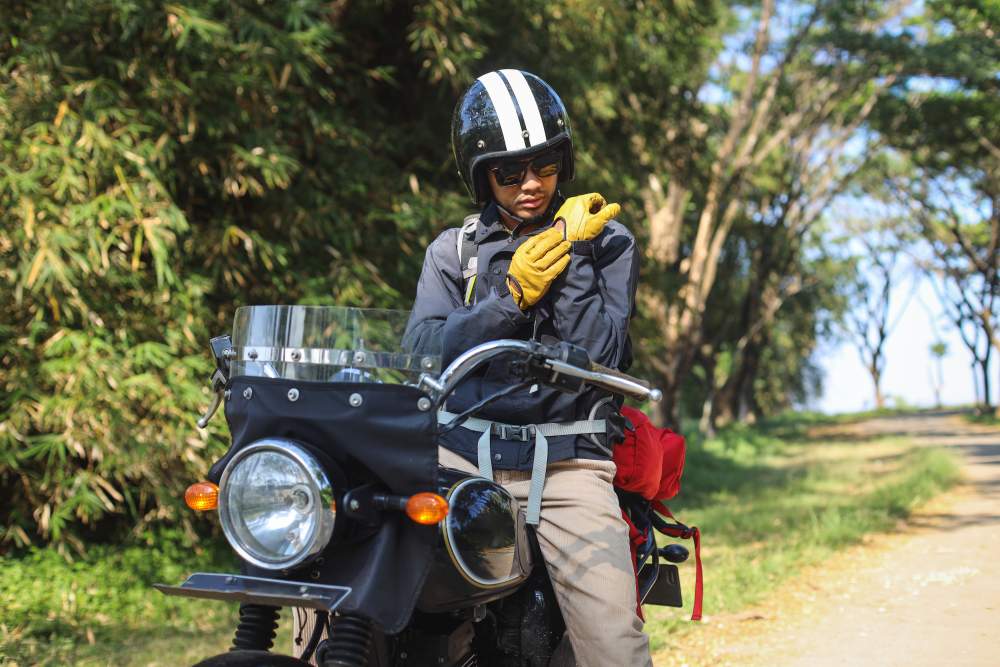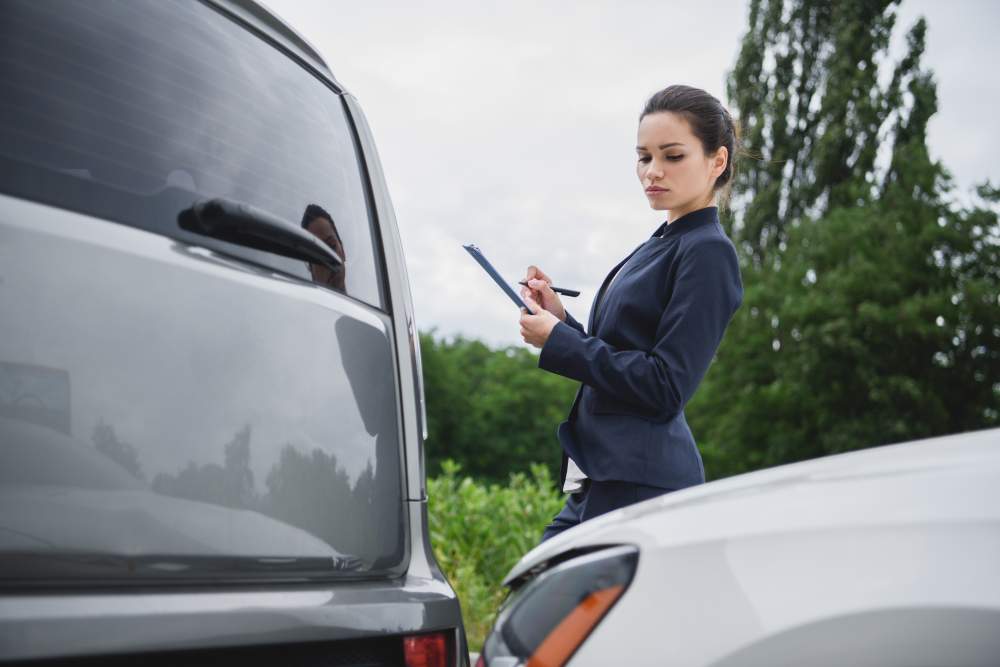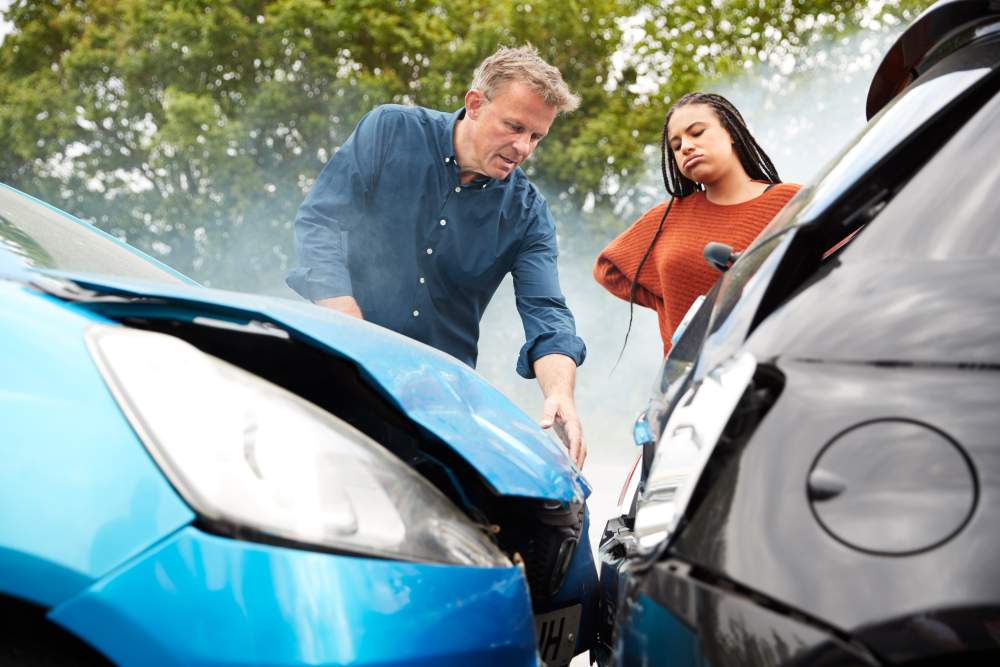Common Causes of Motorcycle Accidents in California

Motorcycle riding in California offers an unparalleled sense of freedom and adventure. The state’s scenic routes, coupled with its favorable weather, make it a haven for motorcyclists.
However, this enjoyment comes with significant risks. Motorcycle accidents have a higher probability of severe injuries or fatalities among all motor vehicles, making it vital to understand the common causes behind these incidents. Unfortunately, motorcycle accidents are common on California’s roads, often leading to severe injuries or death.
The elements that make riding a motorcycle enjoyable can also contribute to its dangers. Understanding the causes of these accidents can help riders take precautions and stay safer on the roads.
Broadside Collisions
Broadside collisions, or T-bone collisions, occur when the front of one vehicle crashes into the side of another, forming a “T” shape. These accidents are particularly dangerous for motorcyclists, as the impact can be devastating due to the lack of protective barriers.
According to a study from Berkeley, side-impact crashes are the most common type of motorcycle accident, with a higher probability of fatal injuries for motorcyclists because they often result in the rider being thrown from the bike. The risk is compounded by motorcycles being smaller and less visible than cars, increasing the likelihood of being struck in intersections or when a vehicle fails to yield.
Several factors contribute to broadside collisions involving motorcycles. One common cause is when a vehicle runs a red light or fails to stop at a stop sign, hitting a motorcycle crossing the intersection lawfully.
Additionally, these collisions often occur when a vehicle turns left across the path of an oncoming motorcycle, misjudging the motorcyclist’s speed or failing to see them entirely. Speeding, distracted driving, and impaired driving further exacerbate the risk, as they reduce the reaction time needed to avoid a collision.
Left Turn Accidents
Accidents involving vehicles making left turns are a significant danger to motorcyclists. These accidents typically occur when a motorcycle goes straight through an intersection, passes the vehicle, or attempts to overtake it. Due to the motorcycle’s smaller size, it often goes unnoticed by the turning driver, resulting in a collision.
Left-turn accidents are particularly prevalent in urban areas with heavy traffic. Motorcyclists should always be aware of vehicles waiting to turn left and anticipate potential hazards. Defensive driving, maintaining a safe speed, and wearing high-visibility gear can help reduce the risk of these accidents.
Lane Splitting
Lane splitting, the practice of riding a motorcycle between slow-moving or stopped traffic lanes, is legal in California. However, it remains a controversial practice due to its inherent risks. While some argue that lane splitting can reduce traffic congestion and prevent rear-end collisions, others highlight its dangers. Lane splitting poses several risks:
- The proximity of larger vehicles to motorcycles.
- Limited space for motorcyclists to maneuver.
- Car drivers do not expect motorcycles to pass in slowed or stopped traffic.
To safely lane split, motorcyclists should only do so at moderate speeds, stay visible to other drivers, and be prepared for sudden movements from vehicles.
Speeding
Speeding is a significant factor in many motorcycle accidents. High speeds reduce the rider’s ability to react to obstacles or sudden changes in traffic conditions. Moreover, the impact force in a high-speed crash is significantly greater, often leading to more severe injuries or fatal crashes.
The National Highway Traffic Safety Administration (NHTSA) reports that speeding was the most prevalent factor in fatalities, accounting for 38% of fatal motorcycle accidents. Riders should always adhere to speed limits and ride at speeds appropriate for the road and traffic conditions. This helps avoid accidents and mitigates the severity of injuries if a crash occurs.
Intoxication (Alcohol and Drugs)
Riding a motorcycle requires sharp reflexes and clear judgment, both of which are severely impaired by alcohol and drugs. Intoxication is a common cause of motorcycle accidents, often leading to fatal consequences.
Driving under the influence of alcohol or drugs significantly impairs a rider’s ability to make sound decisions and react swiftly. Riders should never consume alcohol or drugs before getting on their motorcycle. Planning for a safe ride home, using designated drivers, or opting for public transportation can help prevent these tragic accidents.
Road Hazards
Motorcyclists are particularly vulnerable to road hazards that might be minor inconveniences for cars. Potholes, wet pavement, debris, and uneven road surfaces pose significant risks. These hazards can cause a motorcyclist to lose control, leading to severe accidents.
Road maintenance issues are a notable cause of motorcycle accidents. Motorcyclists should remain alert to road conditions and adjust their speed and riding style accordingly. If an accident occurs due to poor road maintenance, the rider may have legal grounds to seek compensation from the responsible municipality or state.
Blind Spots
Motorcycles often fall into the blind spots of larger vehicles, making them invisible to drivers. This is especially dangerous during lane changes and turns. Drivers may inadvertently collide with a motorcycle they didn’t see, leading to severe accidents.
Motorcyclists can minimize this risk by avoiding riding in other vehicles’ blind spots. Using reflective gear and always signaling intentions can also help increase visibility. Defensive riding, where the motorcyclist anticipates the actions of other drivers, can further reduce the likelihood of blind spot accidents.
Other Causes
While the above causes are the most common, several other factors contribute to motorcycle accidents:
- Sudden Stops: Cars stopping abruptly can cause rear-end collisions, especially if the motorcycle follows too closely.
- Car Doors: Drivers opening car doors into the path of an oncoming motorcycle can cause accidents.
- Weather Conditions: Rain, fog, and other adverse weather conditions reduce visibility and road grip, increasing the risk of accidents.
Motorcyclists should always maintain a safe following distance, stay alert for parked cars, and adjust their riding to suit weather conditions.
Accident Prevention Tips
Wear Proper Gear
- Always wear a DOT-approved helmet to protect your head in an accident.
- Use protective clothing, including gloves, jackets, pants, and boots, to minimize injuries.
Stay Visible
- Wear bright, reflective clothing and use reflective tape on your bike.
- Keep your headlights on, even during the day, to increase visibility to other drivers.
Follow Traffic Rules
- Obey all traffic signals and signs, and follow the speed limits.
- Use proper lane discipline and avoid weaving between lanes.
Use Signals
- Always use turn signals when changing lanes or making turns.
- Use hand signals to enhance communication with other drivers.
Maintain a Safe Distance
- Keep a safe following distance from the vehicle in front to allow ample time to react.
- Avoid riding in the blind spots of other vehicles.
Stay Alert
- Stay focused and aware of your surroundings, including other vehicles, pedestrians, and potential hazards.
- Avoid distractions such as mobile phones or other devices while riding.
Check Weather Conditions
- Be aware of the weather forecast and avoid riding in severe weather conditions.
- Adjust your riding style to suit the weather, such as slowing down on wet or slippery roads.
Regular Maintenance
- Ensure your motorcycle is in good working condition by performing regular maintenance checks.
- Check the brakes, tires, lights, and fluid levels before every ride.
Take a Motorcycle Safety Course
- Enroll in a motorcycle safety course to improve your riding skills and learn advanced safety techniques.
- Refresher courses can be beneficial even for experienced riders.
Avoid Riding Under the Influence
- Never ride after consuming alcohol or drugs that can impair your judgment and reaction times.
Anticipate and React
- Anticipate the actions of other drivers, especially at intersections and during lane changes.
- Be prepared to take evasive action, such as braking or swerving safely.
Practice Defensive Riding
- Always assume that other drivers may not see you and ride accordingly.
- Be cautious in heavy traffic and avoid aggressive driving behaviors.
Adjust for Passengers
- If carrying a passenger, ensure they are also wearing appropriate safety gear.
- Adjust your riding style to account for the additional weight and altered balance.
Plan Your Route
- Choose routes with less traffic and better road conditions whenever possible.
- Be aware of construction zones and areas known for heavy congestion.
By following these practices, motorcycle riders can significantly reduce their risk of accidents and ensure a safer riding experience. These preventive measures protect the rider and contribute to overall road safety for all users.
What to Do if You Are Involved in a Motorcycle Accident
Ensure Safety
- Move to a safe location away from traffic if possible.
- Check yourself and others for injuries.
Call 911
- Report the accident and request medical assistance.
- Get a medical assessment even if injuries appear minor.
Avoid Moving Injured Persons
- Only move someone if there is immediate danger (e.g., fire).
- Wait for emergency services to handle serious injuries.
Document the Scene
- Take photos of the accident site, your motorcycle, other vehicles involved, and visible injuries.
- Collect evidence for insurance and legal purposes.
Gather Information
- Exchange names, contact information, insurance details, and vehicle information with the other parties.
- Collect contact information from witnesses.
Avoid Discussing Fault
- Stick to the facts when speaking with the police.
- Do not discuss fault with other parties involved.
Notify Your Insurance Company
- Report the accident to your insurance company.
- Provide all collected information and documentation.
Consult with a Motorcycle Accident Attorney
- Seek advice from a personal injury law firm experienced in motorcycle accidents.
- Understand your rights and ensure you receive appropriate compensation.
Motorcycle riding in California offers both thrill and risk. Understanding the common causes of motorcycle accidents is essential for riders to take preventive measures.
If you or a loved one has been involved in a motorcycle crash, don’t wait to get the help you deserve. The experienced motorcycle accident lawyers at Benji Personal Injury are dedicated to fighting for your rights and ensuring you receive the compensation you need to recover.
From dealing with insurance companies to guiding you through the legal process, our team is here to support you every step of the way. Contact Benji Personal Injury today for a free consultation and take the first step towards securing your future.

 AVAILABLE 24/7
AVAILABLE 24/7


